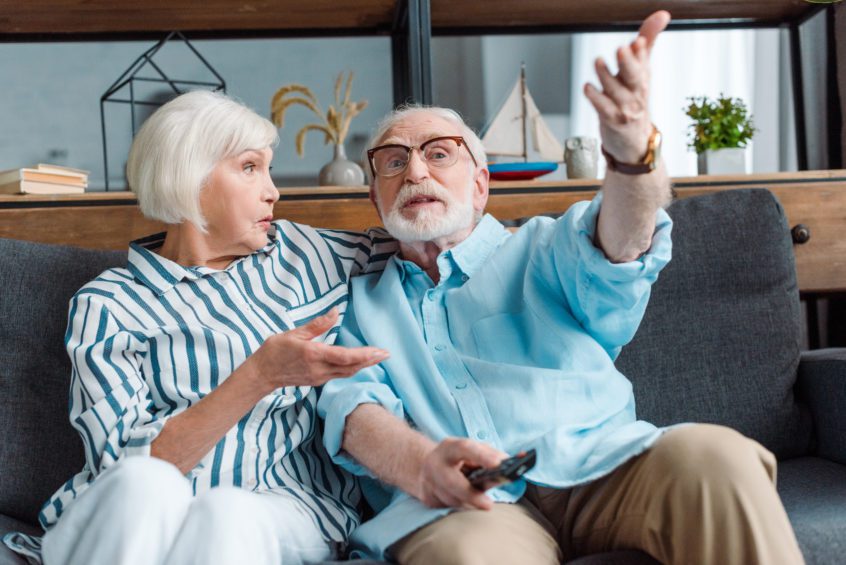If you’ve ever walked into your living room and have sworn the television was turned up loud enough to break the sound barrier, you’re not alone! Spouses and partners often are the first to notice a loved one’s hearing loss, especially when the TV volume is cranked up. Communicating with this person can be difficult and frustrating. You often have to shout to be heard and repeat yourself frequently.
Common areas of concern for both those experiencing hearing loss and those living closest to them, include:
- Telephone—people with hearing problems often have difficulties hearing the phone ring or the person speaking at the other end, while their communication partner has to take on the role of continually answering the phone or telling their partner when it is ringing.
- Television and radio—raised volume as a result of hearing loss is often an area of conflict.
- Social life—people with hearing loss have difficulties with social conversations in noisy environments, while partners don’t enjoy social events due to their partner’s hearing loss or having to attend social events alone. This also contributes to the issue of isolation as both parties may become more socially withdrawn as a result of the hearing loss. In addition, if masks are used in public venues to reduce the spread of infectious diseases, this can create another level of difficulty for someone living with hearing loss. Patience is a must.
- Emotions—communication partners often have the burden and stress of having to adjust to their partner’s hearing loss, as well as the emotional consequences for their relationship. They may have feelings of guilt and upset in relation to the way they react to the hearing loss and their lack of understanding of their partner’s difficulties. They also may find the effort of communicating particularly draining.
Listening to the views of partners and family during clinical consultations and involving them in future treatment strategies can help to ease the patient’s journey through hearing loss and the process of adjusting to wearing hearing aids.
At Associated Audiologists, we encourage our patients to include their partner or close family in their consultation. This helps us determine the patient’s communication needs and make the best recommendations for the patient’s hearing loss, lifestyle and budget.
In addition to advanced hearing aid technology, we have other devices that can help improve communication, especially for spouses or significant others.
Three popular accessories include a remote mic, or spouse mic, that streams the conversation partner’s voice directly to the hearing aids; a television listening device that streams program sound directly to the hearing aids; and Bluetooth enabled hearing aids or streaming devices that stream calls, audio or media directly to the hearing aids. Each of these unique options can improve listening enjoyment and hearing aid performance significantly.
- Spouse mic/Remote mic—The conversation partner simply clips a discreet remote mic onto their clothing, or places it on a table. The individual with hearing loss may or may not need to wear a wireless Bluetooth accessory around their neck, depending upon their hearing aid model. The mic has a 20 to 30-foot range and the mic and receiver work best when they are within sight of one another. In some cases, this device also can be used to stream calls and music. It is especially helpful in one-on-one conversations in difficult listening environments.
- Television listening device—This wireless assistive listening device is specifically designed for enjoying TV/audio and streams program sound directly to your hearing aids. The main advantage is the real-time, high-quality stereo sound it provides. Plus, the sound is delivered directly to the individual’s ears and programmed exactly for their hearing loss needs processed through the digital hearing aids.
- Bluetooth enabled hearing aids or streaming devices can stream calls or audio information directly from a smartphone to the user’s hearing aids using built-in Bluetooth or neck-worn streamers.
If you and your partner are struggling or stressed by hearing loss, schedule an appointment with one of our doctoral-level audiologists.



